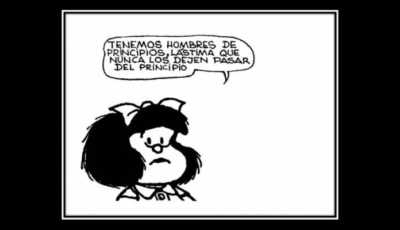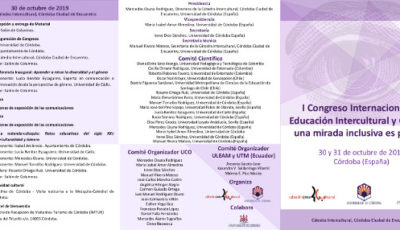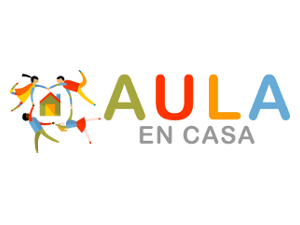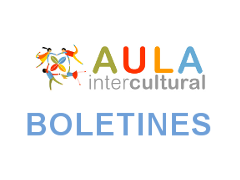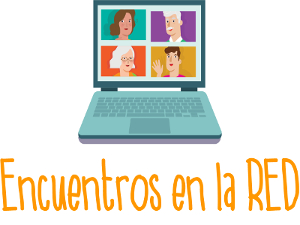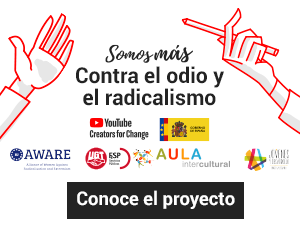Ethnographic Research as a Re/Source of Intercultural Education
By Francesca Gobbo
University of Turin, Italy
For quotation purposes: Francesca Gobbo (University of Turin, Italy): Ethnographic Research as a Re/Source of Intercultural Education. In: TRANS. Internet-Zeitschrift für Kulturwissenschaften. No. 15/2003. WWW: https://www.inst.at/trans/15Nr/08_1/gobbo15.htm
Introduction
The title of this paper refers to a way to enact intercultural education that benefits from the contribution the anthropological approach to education and ethnographic research can offer to the understanding of educational problems and practices, to the improvement of the latter and to possible or necessary actions of change in either one. It is a way that characterizes my own involvement in interculture and, though at the beginning it was the result of biographical contingencies(1), it has later been nurtured by my continuing interest for the study of the multiple meanings and identities that unfold, interact, conflict in our multicultural societies and institutions. The educational approach that developed from it (Gobbo 2000, Gobbo a cura di 1996, 2003a, 2003b, Gobbo, Gomes a cura di, 2003) aims to make teachers and educators look at cultural anthropology, and anthropology of education in particular, as sources of, and resources for, intercultural thinking and actions.
Because of the turn impressed by multiculturalism in the interpretation of societies, and because of the Council of Europe’s support of a conceptualization of immigrants as enculturated persons rather than as mere manpower, cultural anthropology has had a privileged position in the interdisciplinary dialogue on which interculture is founded. Along the years, Italian educational thought has made room for theories of culture, ethnicity and identity elaborated by anthropologists, and educators followed suit by organizing culture festivals(2) and by expecting that immigrant pupils had a primary cultural reference whose diversity(3) could enrich the minds and the hearts of classmates and citizens, as long as it was known and respected. Unfortunately, what was to be known and respected was diversity «imagined» as a rather fixed, homogeneous (immigrants seem to have an ethnic identity not a class one!) and unchangeable quality(4), so that the best educational intentions risked, and still do, to support those very stereotypical attitudes and actions that interculture was meant to challenge. Furthermore, educators’ and teachers’ learning that the immigrant guests are culturally, ethnically, or religiously situated did not (and seldom do) seem to translate into an ability to consider the hosts’ own beliefs, behaviors and habits as similarly situated in culture, ethnicity (if any) and religion. Instead, they are taken as givens, and even considered in danger of being changed, or only challenged, by the others.
Personally, I strongly believe that participating to the anthropological tradition by learning its most important theoretical contributions can certainly challenge habitual, stereotypical and prejudiced ideas on other people’s culture and identity, as well as widen the intercultural perspective; however, such propositional learning tends too often to remain at the level of information rather than to change the way intercultural educators and teachers look at classroom situations, at the relationship between them and family culture, or at the strategies the various social actors enact in various social and educational situations. Yet, since the end of the 1960s, anthropologists of education offered us a challenging (and at times controversial) perspective on the enculturation process and on schooling, by focusing on them as objects of anthropological inquiry in their own right. Thus they were able to give a new interpretation of problems of school performance and behavior, in particular by pointing out how agency (especially the students’) were at work even when lack of positive school results and of better future prospects would lead to think the opposite (Willis 1977, Ogbu 1996a, 1996b, 2003a, 2003b). However, unless the former and the latter disciplinary contributions are put to test in actual contexts, unless they provide educators and teachers with working hypotheses, they may in fact become a sort of intellectual straightjacket for intercultural education.
That such an unsatisfactory result could take place had already been considered a likely possibility by John Dewey, in his classic The Sources of a Science of Education (1929), where, after stating what science and scientific results are to be understood, he posited how their relation to education ought to be constructed if it was to be meaningful and effective. Before arguing (as I will do later in this paper) that the experience of fieldwork (as ethnographic research is also known) can be a source of intercultural education, and that an ethnographic attitude and competence can become a resource for intercultural education, especially when it is practiced by teachers, I will briefly examine the reflections and indications Dewey addresses to teachers.
By way of introduction, the American philosopher and educator reminds his readers that certain areas of knowledge are defined as scientific because they are characterized by systematic methods of dealing with a subject matter or a problem that enable a researcher to better observe, analyze, understand facts, issues or problems she/he is studying, to find and give evidence for her/his interpretation of them and to control them in an intelligent way. Mastery of methods emancipate researchers from the need to follow the traditional beliefs they were born into and raised with, while it gives them the tools to see new problems, new opportunities and alternatives. However, scientific theories not only liberate and illuminate people; for Dewey, they are also «the most practical thing», even for those people who think they cannot afford them because they feel too pressed by practical and immediate concerns: in fact, scientific theories will widen their range of attention beyond the immediate purpose and need. Being a way of looking at and approaching facts and problems, science affects both the scope of the inquiry and the inquirers’ attitude: because the consequences of the latter’s actions, beliefs, meanings are no longer hidden from their awareness and research results, they cannot be ignored and must in fact be taken into consideration.
This high regard for science notwithstanding, Dewey repeatedly stresses that scientific laws do not yield rules of practice, on the one hand, and, on the other, that scientific results can be sources of an educational science only through the mediation of an educator’s mind so that he will be enabled «to see and to think more clearly and deeply about whatever he is doing» (idem: 75). By thus escaping from the rigidity (and the danger) of routines, habits, traditions, such an educator can not only critically appraise existing ends and values, but she/he can also contribute suggestions for new ends, new methods, new means. Though the scientific content of education is not valuable because it provides teachers with objectives, knowledge of social sciences, for instance, «may enable teachers and parents to look further ahead and judge on the basis of consequences in a longer course of developments» (idem: 76). And rightly he concludes that «the sources of educational science are any portions of ascertained knowledge that enter into the heart, head and hands of educators and which, by entering in, render the performance of the educational function more enlightened, more humane, more truly educational than it was before» (idem: 77).
Fieldwork experience as a source of intercultural education I think we can agree that intercultural education has historically emerged both from the concern of receiving societies for the changes in the areas of demography, production, and consumption that have made migration a global phenomenon, on the one hand, and, on the other, from the awareness that each of us, and not just the immigrants, is culturally, socially and historically situated (as American multiculturalism taught us). Social changes have brought diversity among us, but have also made us notice diversity within us.
Because of this, Jacques Delors (1997) has for instance urged that one of the four pillars of education is to learn to live together(5) – an apparently humble objective that is instead a real challenge for each of us educator, since it requires that we embark on a course that favors, even promotes, knowing and understanding what I call our everyday diversity. But how is one to learn about such diversity? Here, I think, is when the qualifier «intercultural» can give us the most useful indication since it refers to the concept of culture both as an explanation of human beings’ wide range of lifeways and as anthropology’s best known invention (Bohannan 1995) and research legacy.
The anthropological tradition and the fieldwork experience have always been represented as an effort to meet other people, to explore, document and interpret widely different lives: ethnographic research, and the fieldwork experience it entails, is first of all an intentional experience of diversity, or an «experiment of experience», to borrow the words of anthropologist Piasere (1997). Such an effort has certainly been made in order to build a body of knowledge indispensable to erect and to maintain the discipline’s boundaries, but another goal has always and consistently been stressed, namely that of freeing one’s mind: anthropology, and anthropology of education more recently, are, at the same time, a challenge to cultural prejudices, an invitation to place one’s culture into perspective and to gain a critical distance from one’s habitual ways.
Dell Hymes says this poignantly when he emphasizes that «the general mission of anthropology in part can be said to be to help overcome the limitations of the categories and understandings of human life that are part of a single civilization’s partial view» (1996: 7); on his part, Bohannan asserts boldly that «ethnography will expand your options. Another word for it is ’education’. (…) [Furthermore, it can be said that] ethnography is what a good education is all about» (1998: 6, 9). Consequently, ethnographic research has often been dubbed as a learning experience, especially when the «field» meant a location quite distant from the ethnographer’s home and the Other was represented by «natives» (who often were colonized subjects as well, and therefore were already endowed with at least a double identity and group membership) whose cultural difference the researcher could easily and quickly appreciate. The journey necessary to reach the location literally took the ethnographer into a world where familiar habits, rules, norms, beliefs, values did not obtain. Instead, different ones had to be learned in order not only to survive the first period of adjustment and later to participate in everyday life and/or special events, but also to achieve what was the reason of the journey: «to look out at the world through another people’s eyes», or «to make the strange familiar». Because of this indispensable objective, ethnographic research has also been interpreted as the process of undergoing «a new socialization», while doing fieldwork or going into the field was sometime likened to a rite of passage that ethnographers were willing to undergo in order to affirm their professional membership (cfr. Anderson Gallantin 1990: 2; Fabietti and Remotti 1997: 630).
But there is more to fieldwork than just membership: as my teacher – the late anthropologist John Ogbu – so often reminded me, the aim of knowing and understanding cultural diversity offers a researcher the opportunity to become aware and appreciate that others are agents, namely, that they interpret the world and act in it according to their cultural and personal categories, and whose «voice» requires to be listened to when they speak. I would like to add that anthropologists of education have paid special attention to such «voice»: they have thus been able to point out to us educators that schools are both educational institutions and «environments saturated with culture» (in the anthropological sense), while pupils are both formally equal to one another and «members of cultural, ethnic, linguistic groups» (not unlike their teachers). These anthropologists have further advised us educators to start considering the likelihood that schooling may not have the same meaning for members of different groups and that their perception of the institutions and of its goals may be influenced (or thwarted) by the group’s history of minority/majority relationship and by their differential social status (Ogbu 1978, 2003a, 2003b).
In time, the learners’ journey into Otherness has taken a different route and has returned to «cultural scenes» whose symbolic boundaries often were only a few kilometers away from the researcher’s home (Spradley and McCurdy 1972, Hannerz 1992). The task then became that of «making the familiar strange», so as to bring the cultural dimension of unexamined, taken for granted local «scenes» under scrutiny and provide them with an interpretation. It is an interpretation not always so easy to come by, especially in contexts characterized by a high degree of familiarity: «one may live nearby, speak the same language, and be of the same ethnic background, [but] a difference in experience may lead to misunderstanding the meaning, the terms and the world of another» context (Hymes 1996: 8). In any case, school children, the elderly, hitchhikers, drunkards, the homeless and many other different «cultural groups», took the place of faraway people and stepped in under the ethnographer’s gaze. The former were the «familiar others» to a researcher who disguised the «nativeness» she/he shared with them under the «professional cloak of the stranger» (cfr. Agar 1980). Later on, and for the reasons mentioned at the beginning of this paper, our societies started to be defined as multicultural ones and it was the immigrants’ turn to play the role of the Other. These «natives» from places that perhaps used to be anthropological locations are now among us, living around the corner or across the street, and they take care of our many wants and needs. The researcher’s indispensable estrangement, traditionally produced by geographical displacement, is now substituted by estrangement within one’s familiar settings.
But societies are today defined as multicultural not only because of the immigrants’ presence but also because we perceive that our culture can no longer be seen as a totally homogeneous one, that «we» don’t share many cultural aspects with one another, due to the acknowledgement that in societies stratified by social status and knowledge we expect (and are expected) to become differently competent and to enjoy differential access to resources (Goodenough 1976, Hannerz 1992, Ogbu 1978, 2003a, 2003b). Against this background, «the need to understand the Other … takes on a new immediacy. (…) Modern population densities makes strangers of us all. (…) Aliens are all around us – in perception if not in reality» (Bohannan 1998: 3). And we need not go too far away: those of us who work with young people know quite well the feeling of being one of those «alien» to them (mostly because of age and experiences), while their attires, their tastes, their jargons as well as their silence (not to speak of their age and different experiences) often make them «alien» to us. Yet, it is precisely this situation that can prod us, and them, to know and understand our different views of the world(6), in an effort to achieve the goal of living together (last but not least, hopefully in peace).
To this end, cultural anthropology provides us with good reasons: tickling our personal and collective aspirations, it begins with inviting us to consider how «the less of human behavior that is foreign to us, the fuller the life you can live» (idem: 4). Then, it prods us to recognize that what seems at first almost incomprehensible, starts to make sense as soon as «one begins to understand something about what is taken for granted about life, the universe and people within a certain group» (ibidem). Along this experience of sense seeking and making, we come to realize that being an enculturated person implies «unexamined assumptions» about everything that is of importance to a culture and its members, even though those very members «may totally disagree about what these important things require of society and the individual» (idem: 5).
Here we can perceive the double edged «nature» of culture: we, and the others, are «cultural creatures» because both we and they can become full human beings only through culture (or, in operational terms, through the enculturation process already at work even before one is born) that provides us, and them, with tools and ideas on how to interact with other people and to develop different ways of life. Therefore, the understanding of culture, and the understanding of how it works, are central educational aims (and not just disciplinary ones) that ought to be pursued by, and in, our multicultural societies. Yet, and at the same time, culture makes everyone of us provincial (or, in more technical terms, it makes us ethnocentric). Our way (or their way, for that matter) to become human gives us a culturally specific identity but also «it mentally imprisons» us (as much as theirs does with them). In fact, anthropologist Bohannan continues addressing the readers directly: «whenever you look at the world around you, you reason from the premises – the unquestioned assumptions – which your culture impressed upon you [and from the perspective] your culture provides [you with] … [and that] works like a distorting mirror» (idem: 7).
In a vein that recalls Dewey’s remarks quoted in the introductory paragraph, this author engages its audience one more time: when there is «only one looking glass, you never discover you are a prisoner of its refraction. The only way to recognize that is to look into a different mirror, one which deforms reality in another way. Only then you can see that you’ve had a point of view all along» (idem: 7). Disciplinary and educational goals come to be tightly intertwined: anthropologists strongly believe that fieldwork research can provide those willing to undergo it with many additional mirrors that will enable them to see how «biased» their view of things is, and such an aim is very close to efforts of intercultural education to face and overcome prejudices, even racism, and to promote mutual understanding. Thanks to such educational and research experience, the vision of opportunities, options and constraints of a way of life is expanded: it becomes, as it has been aptly defined, a «binocular vision» (Bohannan 1998). The intentional effort to understand how and what made the others as they are offers an added bonus to the inquirer, namely a vantage point from which to look at how and what made her/him (and us) as we are (and perhaps how and what each group of people can become, once an intercultural conversation begins).
Anthropologists and anthropologists of education further remind us that the others they observe, question and listen to during fieldwork are not just «objects of study» but, as sources of information, they become partners in the inquiry, thus overcoming the division of society into those who know and those who are known (Hymes 1996). The indispensable cooperation between informants and researcher gives way to a kind of intercultural encounter resulting from the mutual efforts to explain, to understand each other and to be understood that the research partners are eagerly involved into. The active role attributed to informants has implications for the research project itself, namely that changes will not only occur in the ethnographer’s awareness and knowledge, but also in that of her/his partners. The so called data collecting process cannot but have an effect on the sources of information as well, because very often «teaching» an ethnographer about one’s own culture requires that the latter’s questions be clarified(7) and that both cultural frameworks undergo a critical comparison that reminds of the process of cultural mediation.
Changes do not take place exclusively during the partners’ interactions, but also as a consequence of the fact that a context, a group, a network of relations had previously been reconfigured and renamed as «field». In this light, the ethnographer’s worry about influencing the people or the environment she/he is studying should be reconsidered, rather than discounted as an anxious remnant of positivistic times: a «field» is never totally coincident with the group, the context or the institutions from which a question to be asked or a problem to be understood (and hopefully solved) arose. The difference lies – but far from fixed – in the presence-to-become-participation of the ethnographer, in her/his «work» of observing, asking and listening to what is commonly, but not always, taken for granted, and in the natives’ or the locals’ acknowledgement (be they immigrants, pupils, young people or old ones, families, and so on) that their everyday situation can no longer be perceived as it usual was.
Ethnographic research as a resource for intercultural education
In what sense can ethnographic research be a resource for intercultural education? First of all, as I already pointed out earlier in this paper, it introduces a dynamic quality in the anthropological concepts educational activities can be based on, that depends on the dialectical character of the method. Thanks to it, «initial questions may change during the course of inquiry», highlighting another essential character of ethnography, namely «that it is open-ended, subject to self-correction during the process of inquiry itself» (Hymes 1996:7). This spiral like way to do research, though time consuming(8), also capitalizes on «the particular characteristics of the ethnographer [that] are themselves an instrument of the inquiry, for both good and bad» (idem: 13). Such a perspective should not be interpreted solely in biographical terms; on the contrary, theories and working hypotheses represent the foundations on which most research designs are drawn, but not tied down to.
A good illustration of this comes from ethnographic research carried out at the European and international level in various educational contexts; while in this occasion it is impossible to make a thorough analysis of its results, I will however seize the opportunity to present and discuss three Italian contributions, my own and that of two graduate students of mine, Francesca Galloni (2002) and Lucia Naclerio (2002).
Toward the end of 1998, I decided to start a research among Italian Travellers (both fairground and circus people) in an area of the Veneto, a region in the North East part of Italy (Gobbo 2001, 2003, 2004). The reasons for choosing this «field» were manifold: anthropological interpretations of minority education had since the beginning highlighted how diversity meant inequality for the educational history of many groups. This concern had always been central in my intercultural discourse and I was aware how emphasis on diversity per se could lessen educators’ attention toward differential opportunities and outcomes among some minority groups whose low social status within the whole society often carried a stigma the groups’ individual members had little hope to erase. I also believed that in looking at diversity in terms of inequality, studies of immigrant pupils and students had to be complemented by research among so called internal minorities, of which fairground and circus children were part, as they are considered a nomadic occupational minority. From the little I had been able to learn about them, before starting fieldwork, their educational problems appeared to stem both from the group’s perceived cultural differences and from the treatment they received from mainstream sedentary society and culture.
My aim was to understand how the right to education (that is a constitutional right in Italy) is realized in the case of pupils and students whose life is largely nomadic, whose school attendance is consequently parceled out among different schools, and whose educational experience is but a sequence of regular and predictable interruptions. Was there in Italy any provision for such «interrupted learners», as Scottish educator Betty Jordan (2000) calls them(9), so that even though they must «migrate» from one school to another they are still capable of completing the required years of compulsory schooling, and of learning the basics of the national curriculum? Did school pay any attention to these students and to their presumably different educational needs, and how? High school attendance is even more problematic, since if nomadic students want to pursue a high school diploma, they must reside in the vicinity of the school they have chosen(10), and this usually means living away from the family, either with relatives or in boarding schools. The need for such an arrangement is one of the reasons why the majority of fairground and circus children choose to work in the family enterprise as soon as their compulsory education is completed; those I interviewed sounded rather happy for a decision that gives them explicit adult responsibility and rewarding appreciation from the family and the occupational group. However, when continuity with, and a career in, the sector of travelling attractions are systematically «chosen», educational researchers need to inquire about the meaning of such «choice»: does it express loyalty to the group’s cultural tradition? Is it based on the recognition of still satisfactory economic rewards? Is equality of educational opportunities limited so that it is difficult for occupational nomads to see, or to find, alternatives?
At the beginning of my research, I had hypothesized that the families’ nomadic style of life made them look at schooling (as it relates to present conditions and future prospects) in a different way from that of sedentary families and individuals, regardless of the latter’s socioeconomic status, but what I learned in the «field», and from teachers’ interviews made later, points to a variety of factors influencing the life decisions of these nomadic families and students. In fact, fairground and circus people’s narratives indicate that both the enculturation process and the work constraints are powerful reasons to «choose» to remain in the sector of travelling attractions. Yet the same narratives tell us how such reasons conflate with even more powerful ones, namely the practical arrangements(11) allowing these children to attend compulsory schooling that remind of a form of benign neglect (the teachers’ good intentions notwithstanding), the lack of educational provisions such as education at distance or e-learning aimed at promoting longer school attendance that will not require leaving the family, the persistence of prejudice and stereotyping and the many changes that have taken place in Italian society since the 1968 law’s recognition of this occupational sector’s «social function». Because social changes concern the entertainment sector as well, and that of travelling attractions in particular, fairground and circus people worried, on the one hand, that the attraction handed down to them together with the necessary skills from a previous generation, or the newly bought one meant to secure a young couple’s economic independence, would no longer be able to provide a satisfactory future; on the other hand, longer education and possibly a high school diploma that might afford the latter were not within easy reach. Perhaps correctly, these families feared that if they enrolled their children in high school the latter would be cut off from the family cultural and working tradition, while if their sons and daughters helped keeping up such tradition, they could slowly be pushed toward the margins of economic production, civic participation, social intercourse, and (of course) entertainment.
The ethnographic research of Francesca Galloni aimed first of all at exploring how Sikh families and their children related to schooling and to the curricular and social requirements of Italian elementary and junior high schools. Then, it asked what strategies did the families enact in order to ensure positive school performance and maintenance of religious and ethnic identity. The researcher’s interest had been spurred by learning of the high number of Sikh male adults employed to tend the renown cows (those from which Parmesan cheese is made) in the province of Cremona (Lombardy region). Enjoying good salaries, they had soon called their families to join them living in farms scattered around the area. In the scientific literature on migration, Sikhs are an immigrant minority group that has a history of migration to the United Kingdom and the United States where they have been able to reach social and educational success, even when, as it happened to the first generation of immigrants, they had to put in a lot of hard work to succeed. Ethnographic research has been carried out among them both in the United States and in the United Kingdom (cfr. Gibson 1987, 1988, Gibson and Ogbu eds. 1991), so that Galloni’s research could also aim at finding out to what extent the Italian cultural, educational and work context could make a difference in terms of identity, adaptation to the receiving country’s cultural habits and rules, and positive orientation to the future, in comparison to English speaking environments.
Findings indicate that context does not influence the process of social and job integration of male Sikhs, be they adults or young ones. However, because farms are rather isolated, the wives speak little Italian and don’t usually drive a car to take their children into town or to events to which they might be invited by their peers, the family integration process tends to lag behind. This concurs in maintaining a firm religious identity whose boundaries follow the home’s ones closely, and are supported by religious reunions and festivals celebrated by the larger Sikh community living ad working in the area of the Po river plain. Farm boundaries and home boundaries being coincident, there is where the children’s «additive acculturation» (to borrow Ogbu’s definition) stops. Such acculturation that allows and even promotes a double cultural framework (Ogbu 2003) is welcomed and supported outside the home, to the point that Galloni notices that Sikh fathers spoke of their sons «as Italians» when she queried them about the children’s identity. Not unlike what happens in other countries, Sikh fathers in Italy expect their children to work hard and do their best in school, because being an immigrant cannot be an excuse for poor results. Whenever this happens, the one who is given low grades is rather heavily teased by his Sikh friends; educational problems are seen as related to the new, different language those children must learn rather than to the population’s biased attitudes. Not surprisingly, Sikh boys and girls enjoy school because it represents one of the few opportunities they have to meet their peers and share the local «youth culture»; however, gender plays an important role in identity maintenance, because girls (though they find some freedom in school that is not allowed them at home) remain under the strict control of their brothers who expect them to behave as proper Sikh girls should and are ready to chastise them or to report any «bad» deed to their father.
Lucia Naclerio’s fieldwork was aimed at understanding what motherhood meant for immigrant Nigerian mothers living in Padua. Having at last established contact with two different groups of them (married Catholic Ibo mothers often managing small shops and beauty parlors, on the one hand, and, on the other, unmarried young Ibo mothers participating in rehabilitation programs after choosing to leave the streets), Naclerio started to meet with them regularly, in their homes, at work and at a local childcare center where the first group took their children and where the researcher worked for a while. She had hypothesized that these mothers, who were relatively well off, held a respectful position within the Padua Nigerian community, and used a local educational institution (albeit one that described itself as «multicultural»), would be eager to be integrated in Padua society and culture, while she expected that those of the second group who lived in a so called «protected housing» with their baby and had experienced the violence of street life, would rather make plans to return home as soon as possible and would thus hold on to their Nigerian identity, especially since they had fewer chances than the others to meet local people, aside from the sisters and the volunteers working in the «protected housing».
However, listening to and asking about their future prospects and projects, Naclerio realized that the mothers’ dreams and plans for their children were quite different from what she had expected. The Nigeria mothers and wives in the first group maintained a strong national and ethnic identity that was in turn sustained by the circle of Nigerian friends, relatives and customers; they planned to transmit it to their children and compared it positively with the Italian and local ways, in particular with regard to religious behavior. On the contrary, the former prostitutes had given Italian names to their babies and told Naclerio they hoped their children could have a future in Italy; in their conversations a job and the Italian citizenship were emphasized as the two goals toward which those mothers would strive for.
The findings are interesting on many accounts: first of all, they open a discussion as to whether pride in diversity can mostly be sustained and promoted by those who enjoy a relatively financially and emotionally stable condition in the receiving country and who are at ease in expressing it(12). The children of the first group are spoken of, and treated, as members of genealogies whose roots are in Nigeria, while the less privileged mothers invest in their children as future Italian citizens. Secondly, the findings indicate that identity responds flexibly to life circumstances – be they good or bad; in other words, it has to do not only (or not so much) with origins but with present and future perceived opportunities that influence the way one looks at her/himself and invite to make plans accordingly(13). While we don’t know if the mothers in the second group will succeed in shaping a new life for themselves and their babies, we should acknowledge that the process they are undergoing asks for a price that, however, they think they can negotiate. It can also be envisaged that in the future they, and their children, could reconstruct an identity that includes ethnicity as what prodded them to make changes in their life. And if this will happen, it will also be because concomitant changes have taken place in Italian society and cultures.
Conclusions
Changes in the ethnographer’s awareness about her/himself, and the increase and deepening of knowledge about the others are consequences of the intentional experience of diversity we call fieldwork, and have here been presented as sources of, and resources for intercultural education. Even outside the «field», though, multicultural societies, and their everyday diversity, invite us, and the others, to reformulate the concept of the «educated person» and answer the question «how is any of us (and any of the others) changed by the encounter with diversity?». I would like to conclude these pages as I began, namely with the words of a philosopher of education: Israel Scheffler notices how «the understanding of other cultures than one’s own provides multiple instances of culture to reflect on, and so affords the basis for grasping the concept of culture in general. Moreover, the significance of understanding other cultures is not simply a matter of expanding one’s cultural sophistication. It is also a primary method for deepening the grasp of one’s own culture. Going outside such culture is a way of understanding what is inside. It also enhances the possibility of thinking critically and creatively about alternative ways of doing things in one’s own cultural milieu» (1995: 97-98).
Therefore, today’s educated persons are – better yet, should be – those who have achieved the capacity to understand the world rather than to be merely informed about it. The cognitive perspective they have thus achieved, enters the persons’ perception, changes it as well as it changes the perception that others have of them; in other words, the way a particular person looks at institutions, relations, modes of communication and so on has been transformed by what one has learnt, thanks to her or his education. Scheffler goes further with his reasoning: he points out that learning to question our assumptions (and our implicit, naive ethnocentrism), through philosophical or empirical research, means to become capable of fostering others’ capacity to criticize rules, values and beliefs we perhaps expected them to share and respect. The other’s actions, reactions and disposition can teach us something new, something unforeseen, that makes us realize how the learner can also be a teacher. In a sense, the others will become our facilitators because, by reacting toward our acts, they make us aware that «the meaning of a culture’s act includes its perceived effects on those in other cultures and must be acknowledged if this meaning is to be fully comprehended. (…) This sort of reception and interpretation is also part of the meaning of the original acts. In short, seeing one’s actions not only from inside one’s own culture, but also from the outside, is essential to getting the full meaning of these actions themselves. (…) Hearing what the other person says about my action, in speech that is common to us both, gives me a sense of the meaning of my action to that person. Once I have this meaning, I am now properly expected to use it in forecasting the potential sense of my future actions, and controlling them accordingly» (idem: 98). When this philosophical perspective is translated into educational practice, education can become that «risky business» it can always be – as Dewey himself stressed a long time ago – and that ethnographic research and anthropological theory pursue in a way which is their own but whose intercultural dimension I tried to argue.
REFERENCES
(1) I happened to be a graduate student at Berkeley at the very end of the sixties, when multiculturalism became the interpretative paradigm of societies such as the United States and the «melting pot» theory of American identity lost its appeal (cfr. Gobbo 1977).
(2) In Italy these initiatives are known by the name of «couscous pedagogy», the equivalent – I think – of the «education of the three s» (sari, samosa, steeldrums). Widely enacted at the origin of intercultural education, they were already looked upon negatively in the early nineties. Unfortunately, the questionable «folkloristic» ideas on which they were centered (the culture of, the music of, the food of a group of immigrants), have often been cast away without a thorough critique of them, so that they reappear any time immigrants are defined as «carriers of culture», for instance.
(3) Such diversity is in relation to the receiving country’s culture, of course, since diversity is not an absolute quality but rather a contingent, relational one.
(4) For a critical appraisal of this widely shared belief, see Fabietti 1995, 1997; Gobbo 2000; Soenen 2003.
(5) Different educators have emphasized different aims of intercultural education, so that such educational discourse and project might address the general need to recognize, to know and to understand diversity, but also that of integration, or they might instead focus on the linguistic problems of immigrant children in the receiving societies’ schools. In Italy this second task has of recently become the most popular aspect of intercultural education, ironically at a time when a good number of foreign born students enroll in post-compulsory schooling or even finish it and get their diploma, thus making us aware that if diversity – especially cultural and linguistic diversity – is here to stay, it will not remain the same.
(6) I wish to take this opportunity to thank collectively the students who, during the past academic years, attended my courses at the University of Padua and then became engaged in looking ethnographically at themselves, their friends and their lives. They are really too many to be mentioned individually (or perhaps the teaching years were too many!), but their commitment will remain an important component of a very rewarding teaching experience.
(7) What seems «so and so» to the researcher is the result of culturally specific meanings that enter and work her/his perceptions.
(8) But can we say this when as ethnographers we are activating the general human capacity of learning meanings, norms, patterns of a way of life, thus setting the research task in continuity with everyday life?
(9) For studies about nomadic occupational minorities see Danaher 1999, 2000, Danaher, Hallinan, Moriarty 1999, Danhaer, Moriarty, Hallinan 2000, European Commission 1994, Freynhofer 2001, Kiddle 999, Jordan 1997, 2000, 2001a, 20001b, Liégeois 1992, School Council Research Studies 1975.
(10) Up to the time of my research, Italian educational system was characterized by different types of schools (classic, scientific and linguistic high school, and high schools that prepare for different professions such as teacher, accountant, and so on). If a student enrolls in one of them, she/he must continue until the completion of the five years course. If she/he decides to change school, he must start all over again.
(11) In areas such as Verona (Veneto) and Piacenza (Lombardy) there have been considerable efforts to improve the situation. See AA. VV. 2002, Provveditorato agli Studi di Verona 2001-2002, Donzello (no date) and Canesi 2001.
(12) This point could be argued for the Cremona Sikhs as well.
(13) Again this could also be argued in relation to Galloni’s findings.
BIBLIOGRAPHICAL REFERENCES
AA. VV. (2002), Vademecum informativo per l’accoglienza e la scolarizzazione degli alunni Rom, Sinti e Attrazionisti, Schola, Veggiano (PD).
Agar M. H. (1980), The Professional Stranger. An Informal Introduction to Ethnography, Academic Press, New York.
Anderson Gallantin B. (1990), First Fieldwork. The Misadventures of an Anthropologist, Waveland Press, Prospect Heights, Ill.
Bohannan P. (1995), How Culture Works, The Free Press, New York.
Bohannan P. (1998), Asking and Listening. Ethnography as Personal Adaptation, Waveland Press, Prospect Heights, Ill.
Canesi P. (2001), Condizione di minoranza e scolarizzazione. Un’indagine tra le famiglie di giostrai in un’area del nord Italia, Facoltà di Psicologia, Università di Padova, rel. F. Gobbo, a.a. 2000-2001.
Danaher P. A. (1999), Learning under the Ferris Wheel and Big Tops: Comparing the Education of Australian Show and Circus People, in Journal of Nomadic Studies, 2, pp. 24ss.
Danaher P. A. (2000), What’s in a Name?: The ’Marginalisation’ of Itinerant People, in Journal of Nomadic Studies, 3, pp. 67ss.
Danaher P. A., Hallinan P. M., Moriarty B. J. (1999), Educating Australian Circus Children: Strategies to Reinvigorate Rural Education, in Education in Rural Australia, 9, 1, pp. 1ss.
Danaher P. A., Moriarty B. J., Hallinan P. M. (2000), Theorising youth and difference, in Youth Studies Australia, 19, 2, pp. 17ss.
Delors J. (1997), Nell’educazione un tesoro, Armando Editore, Roma, (ed. or. 1996).
Dewey J. (1929), The Sources of a Science of Education, Liveright, New York.
Donzello G., Luna Park e spettacolo viaggiante a Verona, Amministrazione Provinciale di Verona, Verona, s.d.
European Commission (1994), Report on the education of migrants’ children in the European Union, Office for Official Publications of the European Communities, Luxemburg.
Fabietti U. (1995), L’identità etnica. Storia e critica di un concetto equivoco, La Nuova Italia Scientifica, Roma.
Fabietti U. (1997), Sulla natura di un «sentimento»: l’identità etnica, in Gobbo F., a cura di, Cultura Intercultura, Imprimitur, Padova, pp. 21ss.
Fabietti U. and Remotti F., a cura di (1997), Dizionario di antropologia, Zanichelli, Bologna.
Freynhofer S. (2001), Leben und Lernen auf der Reise. Eine qualitative Studie in österreichischen Circussen undet besonderer Berucksichtigung des Bereiches «schulisches Lernen», rell. R. Olechowski e G. Khan-Svik, Universität Wien 2001.
Galloni F. (2002), Figlie e figli a scuola, in Osservatorio Provinciale sull’Immigrazione, Turbanti che non turbano. Ricerca sociologica sugli immigrati indiani nel cremonese, Provincia di Cremona, Cremona, pp. 81ss.
Gibson M. (1987), Punjabi Immigrants in an American High School, in Spindler G. D. & Spindler L. eds., Interpretive Ethnography of Education: At Home and Abroad, Lawrence Erlbaum Associates, Hillsdale N.J., pp.281ss.
Gibson M. A. (1988), Accomodation Without Assimilation: Sikh Immigrants in an American High School, Cornell University Press, Ithaca.
Gibson M. A., Ogbu J. U. eds. (1991), Minority Status and Schooling: A Comparative Study of Immigrant and Involuntary Minorities, Garland, New York.
Gobbo F. (1977), Decentramento e partecipazione di base: il caso della Black America, in «Scuola e Città», XXVIII, 1, pp. 32ss.
Gobbo F. (2000), Pedagogia interculturale. Il progetto educativo nelle società complesse, Carocci, Roma.
Gobbo F. (2001), Is the Future a Merry-Go-Round: Schooling and Enculturation among the Fairground and Circus Children in the Padua Province (Veneto, Italy), PERC Colloquium, Harvard University, unpubl. ms.
Gobbo F. (2003), C’è una giostra nel futuro? Esperienza scolastica e processo di inculturazione in una minoranza occupazionale nomade, in F. Gobbo (a cura di), Etnografia dell’educazione in Europa, Edizioni Unicopli, Milano, 2003, pp. 209ss.
Gobbo F. (2004), Enculturation, schooling and the future: the nomadic children’s experience, in Proceedings of CIIMU Seminar «Between Diversity and Inequality», (Barcelona January 21-24, 2004), (in press).
Gobbo F., a cura di (1996), Antropologia dell’educazione. Scuola, cultura, educazione nella società multiculturale, Edizioni Unicopli, Milano.
Gobbo F., a cura di (2003a), Multiculturalismo e intercultura. Interpretazione dei contesti e progettualità educativa, Imprimitur, Padova.
Gobbo F., a cura di (2003b), Etnografia dell’educazione in Europa. Soggetti, contesti, questioni metodologche, Edizioni Unicopli, Milano.
Gobbo F., Gomes A. M. a cura di (2003), Etnografia nei contesti educativi, CISU, Roma (I ed. 1999).
Goodenough W. H. (1976), Multiculturalism as the Normal Human Experience, in «Anthropology of Education Quarterly», 7, 4, pp. 4ss.
Hannerz U. (1992), Cultural Complexity. Studies in the Social Organization of Meaning, Columbia University Press, New York.
Hymes D. (1996), Ethnography, Linguistics, Narrative Inequality, Taylor & Francis, London.
Kiddle C. (1999), Travelling Children. A Voice for Themselves, Kinsgley Publ., London.
Jordan B. (1997), The Inclusive School: Effective Education for Secondary Age Travellers, in E. Hornberg ed., Die Schulsituation von Sinti und Roma in Europa, Frankfurt am Main, pp. 299ss.
Jordan B. (2000), The Excluding Comprehensive School System: The Experience of Showground Families in Scotland, in P. A. Danaher ed., Mapping International Diversity in Researching Traveller and Nomadic Education, special issue of International Journal of Educational Research, 33, 3, pp. 253ss.
Jordan B. (2001a), Exclusion of Travellers in State Schools, in Educational Research, 43, 2, pp. 117ss.
Jordan B. (2001b), From Interdependence, to Dependence and Independence: home and school learning for Traveller children, in Childhood, 8, 1, Spring issue, pp. 57ss.
Liégeois J.-P. (1992), Schooling for gypsies and travellers’ children – Evaluating innnovation, Council of Europe Press, Strasbourg.
Naclerio L. (2002), Tracce di maternità. Percorsi di donne tra identità etnica e produzione culturale, Facoltà di Scienze della Formazione, Università di Padova, rel. F. Gobbo, a.a. 2001-2002.
Ogbu J. U. (1978), Minority Education and Caste: The American System in Cross-Cultural Perspective, Academic Press, New York.
Ogbu J. U. (1996a), L’antropologia dell’educazione: introduzione e cenni storico-teorici, in Gobbo F., a cura di, Antropologia dell’educazione. Scuola, cultura, educazione nella società multiculturale, Edizioni Unicopli, Milano, pp. 1ss.
Ogbu J. U. (1996b), Educazione e stratificazione sociale, in Gobbo F., a cura di, Antropologia dell’educazione. Scuola, cultura, educazione nella società multiculturale, Edizioni Unicopli, Milano, pp. 113ss.
Ogbu J. U. (2003a), Una teoria culturale-ecologica sul rendimento scolastico delle minoranze, in Gobbo F., Gomes A. M. a cura di, Etnografia nei contesti educativi, CISU, Roma, pp. 21ss. (I ed. 1999).
Ogbu J. U. (2003b), Black American Students in an Affluent Suburb. A Study of Academic Disengagement, Lawrence Erlbaum Associates, Mahwah, N. J.
Piasere L. (1997), Etnografia Romanì, ovvero l’etnografia come esperienza, in Gobbo F., a cura di, Cultura Intercultura, Imprimitur, Padova, pp. 35ss.
Provveditorato agli Studi di Verona (a cura di G. Donzello) (2002), Progetto Luna Park per l’integrazione scolastica e la continuità educativa degli alunni itineranti e zingari e per la tutela del loro diritto allo studio, s.l., 2000-2001.
Scheffler I. (1995), «On the Idea of the Educated Person», in Howard V. A., Scheffler I., Work, Education and Leadership. Essays in the Philosophy of Education, Peter Lang Publishing Co., New York, pp. 81ss.
Schools Council Research Studies (1975), Education of Travelling Children, MacMillan, London (under the direction of C. Reiss).
Soenen R. (2003), Creatività e competenze nella vita scolastica quotidiana. Verso una prospettiva pragmatica e dinamica sull’educazione interculturale, in Gobbo F., a cura di, Etnografia dell’educazione in Europa, Edizioni Unicopli, Milano, pp. 91ss.
Spradley J. P., McCurdy D. W. eds. (1972), Cultural Experience. Ethnography in Complex Societies, Science Research Associates, Inc., Chicago.
Willis P. (1977), Learning to Labour: How Working-Class Kids Get Working-Class Jobs, Saxon House, Farnborough.
© Francesca Gobbo (University of Turin, Italy)


